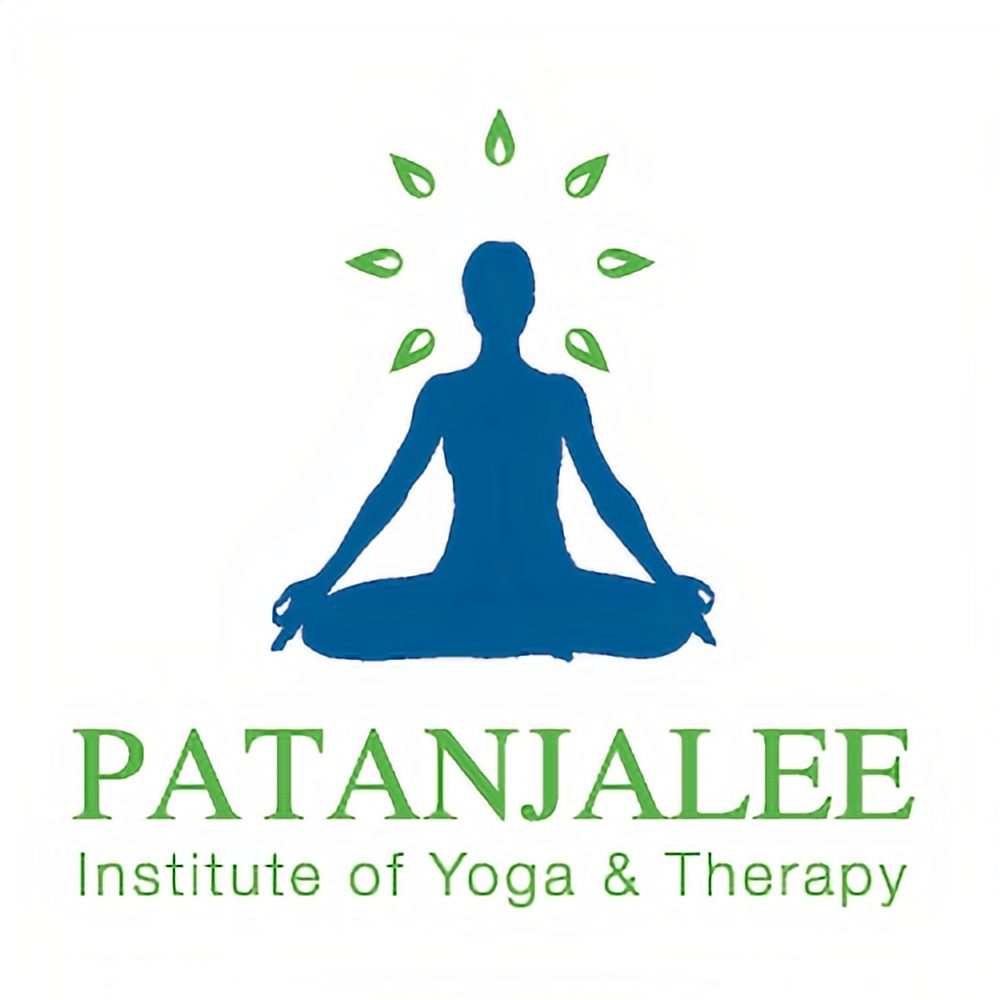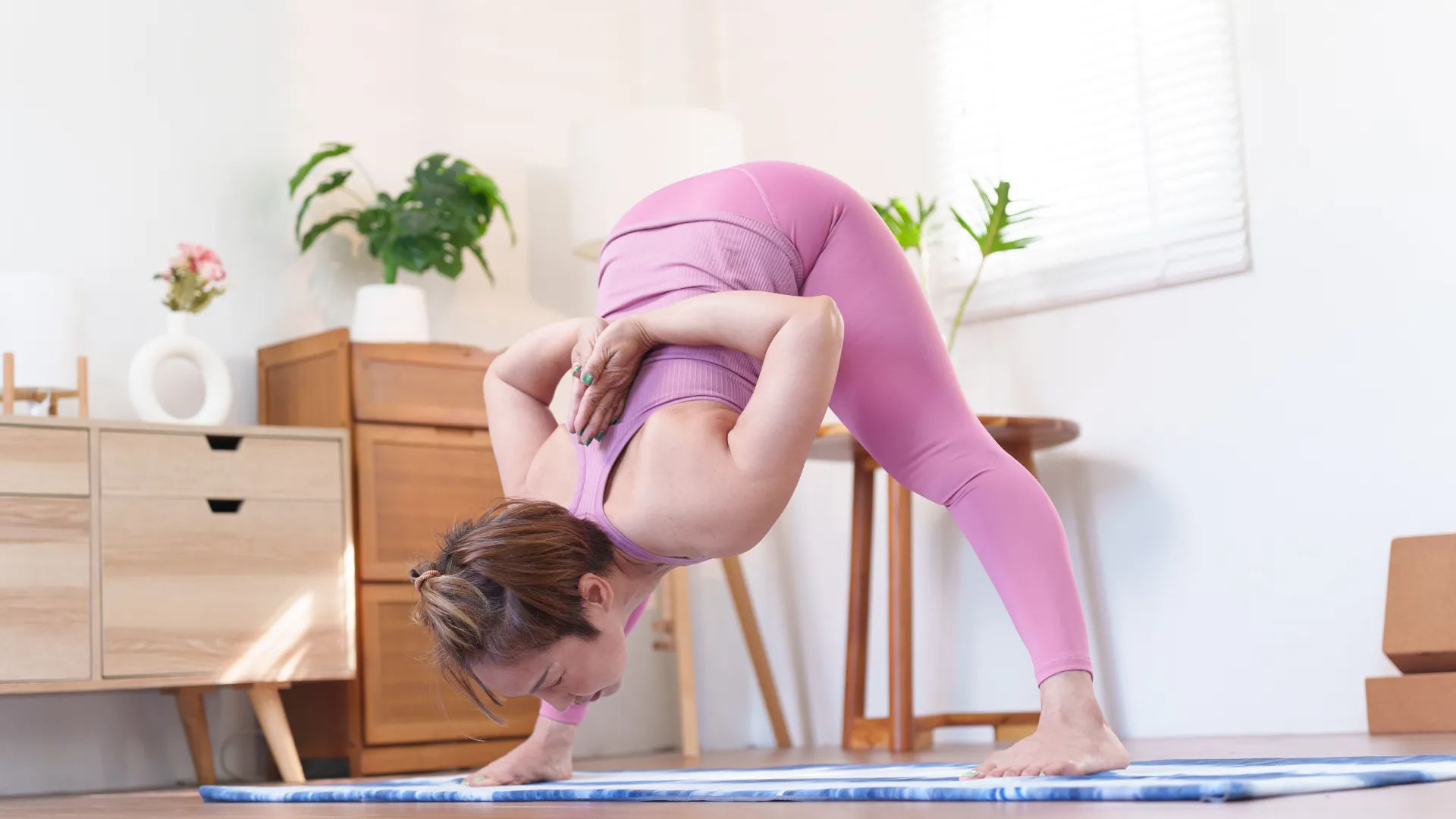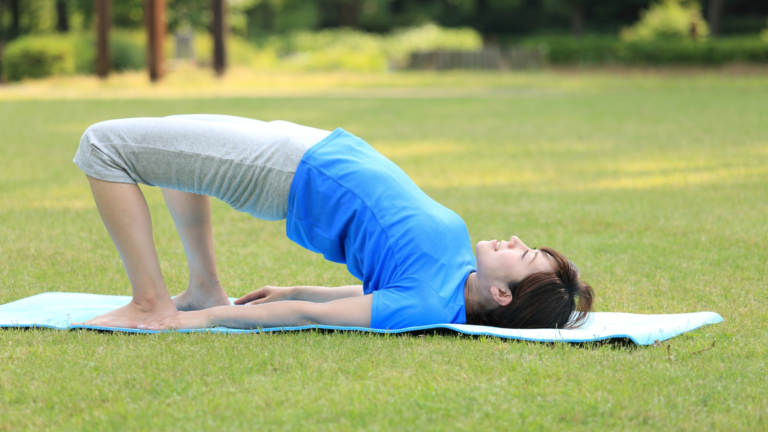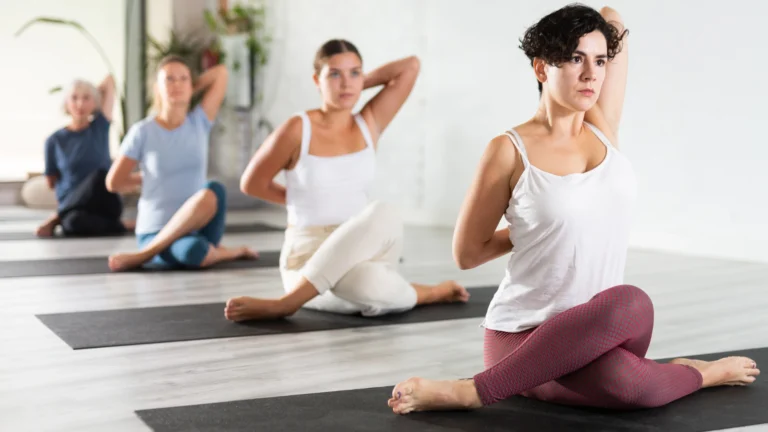Parsvottanasana – Pyramid Pose: Steps, Benefits, and Cautions
Parsvottanasana, commonly known as Pyramid Pose, is a graceful standing yoga posture that beautifully blends balance, strength, and flexibility. Rooted in the forward-bending family of asanas, this pose creates a harmonious alignment between the upper and lower body, inviting both physical discipline and mental focus. At first glance, it may look like a simple forward fold, but as you settle into it, you begin to realize its depth—it challenges your hamstrings, strengthens your legs, and opens up your shoulders and spine, all while grounding you with a sense of stability. Beyond its physical stretch, Pyramid Pose also nurtures patience, mindfulness, and concentration, making it an invaluable addition to any yoga routine. Whether you’re stepping onto the mat as a beginner or refining your flow as an experienced practitioner, Parsvottanasana offers layers of benefits that go beyond the body, enriching both your practice and your overall sense of well-being.
What is Parsvottanasana?
Parsvottanasana is a traditional yoga posture that combines a deep forward bend with strong leg alignment. The word comes from Sanskrit: “Parsva” means side or flank, “Uttana” means intense stretch, and “Asana” means posture or pose. Put together, it translates to “Intense Side Stretch Pose.” In practice, this asana gives a powerful stretch to the sides of the body, spine, and legs.
Because of the way the body forms a long triangular shape when bending forward over one leg, it is popularly called the Pyramid Pose. Just like a pyramid stands firm and balanced on the ground, this posture also teaches steadiness, grounding, and stability.
Parsvottanasana is not only about stretching the muscles; it also connects the mind and body by encouraging focus, balance, and controlled breathing. It’s a simple yet effective posture that can be practiced by both beginners and experienced yoga students.
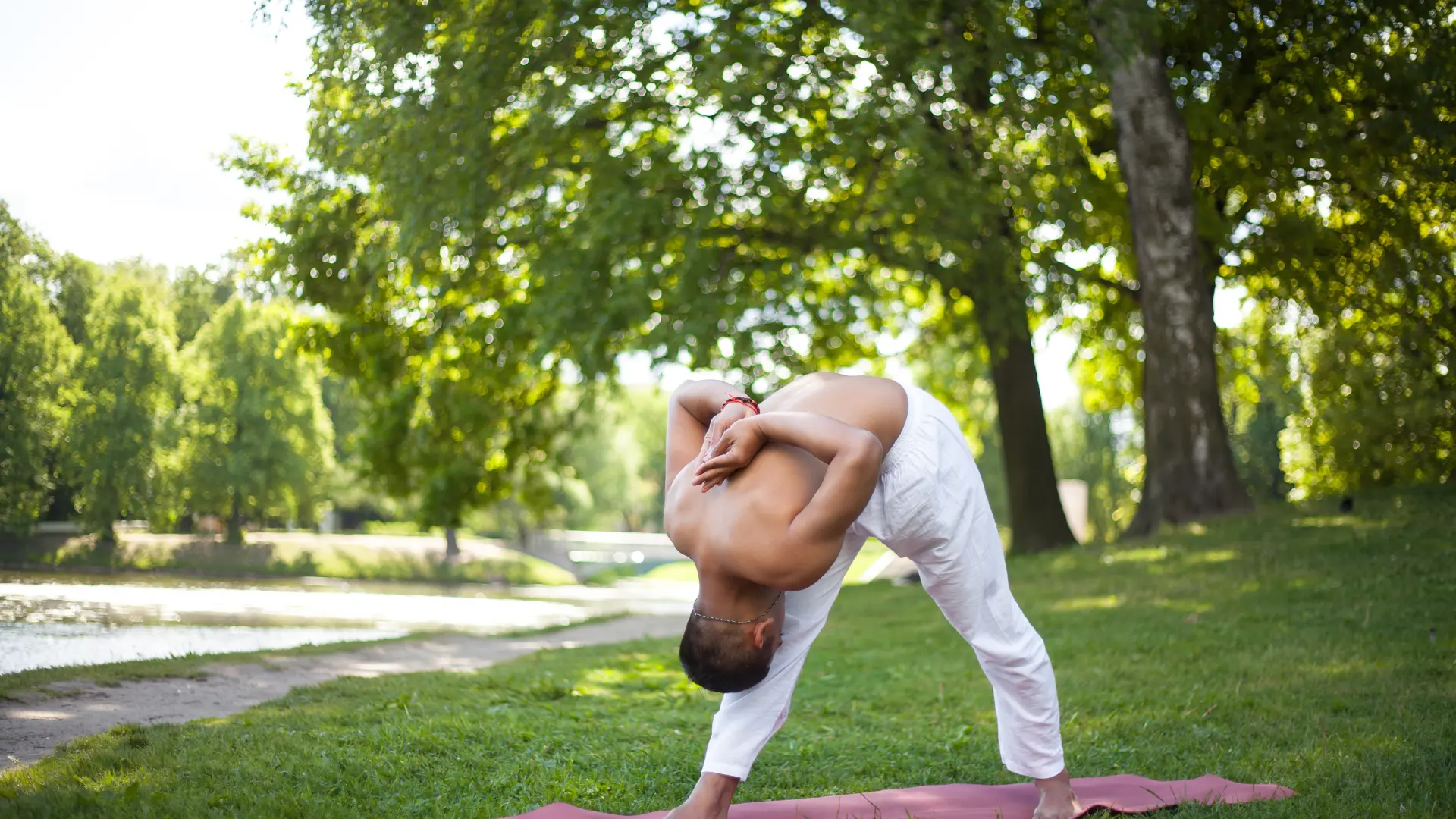
How to Practice Parsvottanasana
Practicing Parsvottanasana requires mindful alignment and attention to breath. Here’s a step-by-step guide to help you get into the pose:
1. Starting Position: Tadasana (Mountain Pose)
Begin in Tadasana, standing tall with your feet hip-width apart and arms at your sides. Ground yourself by pressing evenly through all four corners of your feet. Engage your thighs, lift your kneecaps, and lengthen your spine, reaching through the crown of your head.
2. Step One Foot Back
From Tadasana, step your left foot back about 3 to 4 feet, keeping your toes pointing forward. Ensure that both feet are aligned with your hips. The heels should be in a straight line or slightly staggered to maintain balance.
3. Square the Hips
Square your hips to face forward. This may require drawing the left hip forward and the right hip back. To help with this alignment, you can place your hands on your hips and feel the position, ensuring they are even.
4. Hand Position
There are several options for hand placement in Parsvottanasana:
- Hands on Hips: This is a great option for beginners or if you’re focusing on maintaining balance and hip alignment.
- Reverse Prayer Position: If you have the flexibility, bring your palms together behind your back, fingers pointing upward, and press your palms together. This opens the chest and shoulders.
- Holding Opposite Elbows: Another alternative is to clasp opposite elbows behind your back.
5. Lengthen and Fold
Inhale deeply, lengthening your spine. As you exhale, begin to hinge at the hips, keeping your spine long and reaching your chest forward. Continue to fold forward, bringing your torso over your front leg. Keep your gaze down or slightly forward to maintain a long neck.
6. Final Pose and Adjustments
In the full expression of the pose, your torso will be parallel to the ground, and your hands will be either on the floor, on blocks, or holding your ankles, depending on your flexibility. Ensure that your front knee is not locked out; keep a slight micro-bend to protect the joint. Enrolling in online yoga classes helps in perfecting Parsvottanasana.
Modifications and Props
For those with tight hamstrings or limited flexibility, props such as yoga blocks can be very helpful. Place the blocks under your hands to reduce the distance to the floor and maintain proper alignment. Additionally, you can keep a slight bend in the front knee to ease the stretch.
Benefits of Parsvottanasana
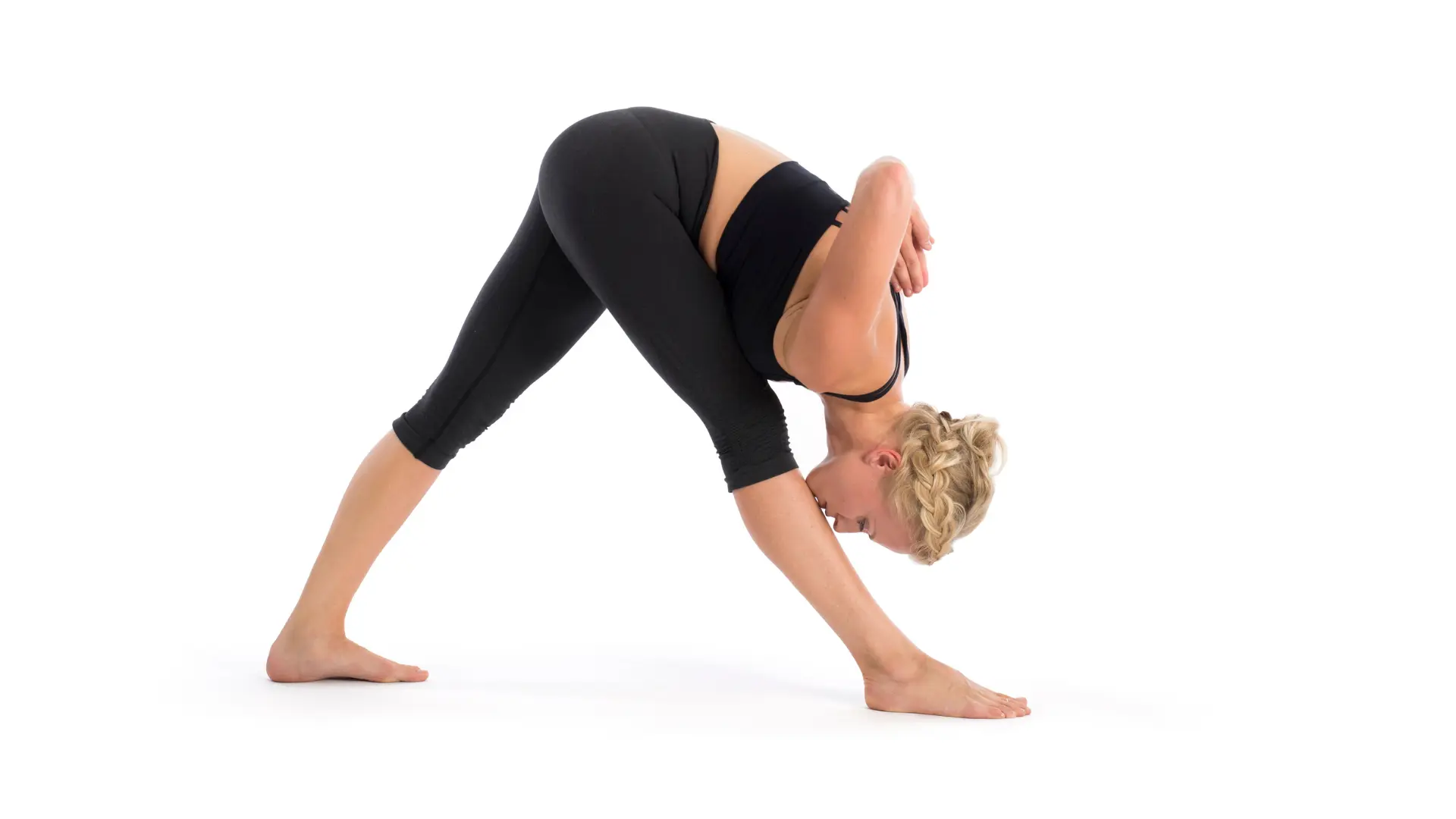
Parsvottanasana offers a wide range of physical and mental benefits:
1. Improves Flexibility and Strength
The pose provides an intense stretch for the hamstrings, calves, and hips, which helps to improve flexibility over time. It also strengthens the legs, ankles, and core muscles as you work to maintain balance and proper alignment. Regular practice of Parsvottanasana can ease stiffness in the lower body, improve posture, and support overall body coordination. For those looking to enhance mobility and strength from home, joining Online Yoga Classes For Flexibility can be a great way to learn and practice Pyramid Pose under expert guidance.
2. Enhances Posture and Balance
By focusing on alignment and engaging the core, Pyramid Pose helps to improve posture. The act of balancing also enhances proprioception, the sense of your body’s position in space.
3. Promotes Mental Clarity and Calmness
Like many yoga poses, Parsvottanasana encourages mindfulness and deep breathing, which can help to calm the mind and reduce stress. The pose requires concentration, which can aid in developing mental focus.
4. Aids in Digestion
The forward bend in this pose massages the abdominal organs, which can stimulate digestion and improve gut health. Practising the pose with expert guidance is essential. Online yoga classes for digestion can provide detailed instruction on Parsvottanasana, helping you learn the pose correctly and practice it effectively.
5. Stretches and Strengthens the Spine
By maintaining a long spine throughout the pose, you help to stretch and strengthen the muscles along the spine. This can alleviate back tension and promote better spinal health.
You can also check out our blog on “Matsyasana – Steps, Benefits, Cautions” for more detailed information about the Matsyasana pose.
Cautions and Contraindications
While Parsvottanasana offers many benefits, there are some cautions to keep in mind:
1. Back Issues
If you have lower back problems, approach this pose with caution. It’s crucial to maintain a long spine and avoid rounding the back. Consider keeping your hands on blocks or on your hips to reduce strain.
2. Hamstring Injuries
This pose provides an intense stretch to the hamstrings. If you have an existing injury, practice with a deep bend in the front knee and avoid pushing into discomfort.
3. Pregnancy
During pregnancy, it’s advisable to modify the pose to accommodate the growing belly. Consider practicing with a wider stance or using props to maintain comfort and safety.
4. High Blood Pressure
The forward bend position can increase pressure in the head. If you have high blood pressure, avoid lowering your head below your heart. Instead, keep your head level with or above your heart, using blocks as needed.
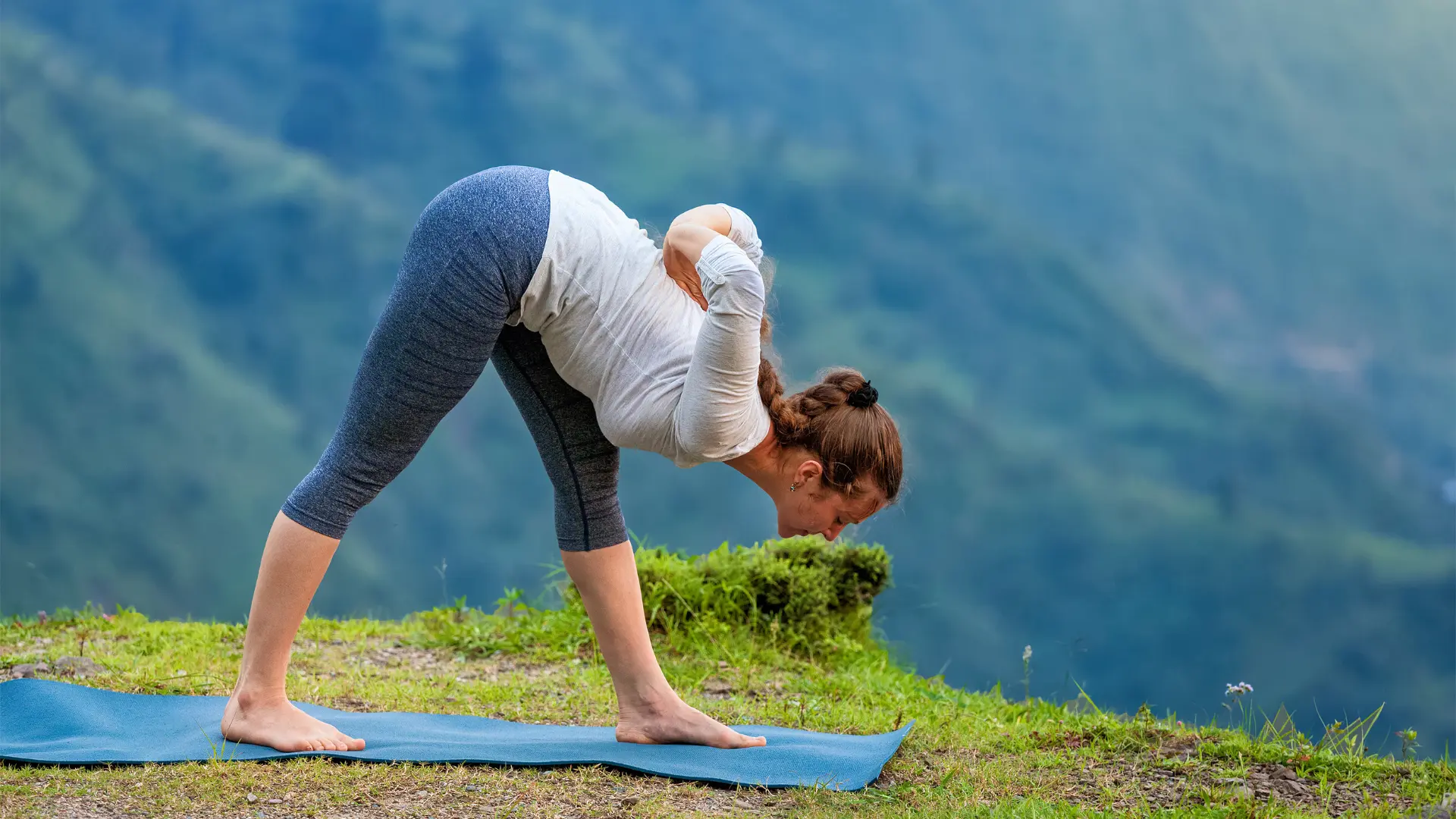
Common Mistakes to Avoid
Overstretching the Hamstrings
Many practitioners push themselves too hard to touch the floor or go deeper into the stretch. This can strain the hamstrings and even lead to injury. Instead, focus on keeping a gentle stretch and use yoga blocks if your hands don’t comfortably reach the ground. Progress will come with regular practice.Rounding the Back
A common mistake is collapsing the chest and rounding the spine while bending forward. This reduces the effectiveness of the pose and puts unnecessary stress on the lower back. Always keep the spine long and extend forward from the hips, not the waist.Misalignment of Hips
The hips should face forward and remain square. Often, one hip tends to rotate outward, which compromises alignment and balance. Engage your core and adjust your stance to ensure both hips are evenly facing the front.Holding the Breath
Some practitioners unintentionally hold their breath while maintaining the pose. This creates tension in the body and limits the benefits. Remember to breathe deeply and steadily; exhale as you fold forward and inhale as you lengthen the spine.
Tips for a Safe Practice
- Warm Up: Always warm up your body before attempting deep stretches. Poses like Cat-Cow, Downward Facing Dog, and lunges can help prepare your muscles.
- Listen to Your Body: Never force yourself into a pose. Work within your limits and be mindful of your body’s signals.
- Use Props: Yoga blocks, straps, and bolsters are great tools to make the pose more accessible and to support proper alignment.
- Focus on Alignment: Proper alignment is key to avoiding injury and getting the most benefit from the pose. Take the time to set up your pose correctly.
- Breathe Deeply: Use your breath to help deepen the pose. Inhale to lengthen the spine, and exhale to fold forward, relaxing into the stretch.
Preparatory and Follow-up Poses
🔹 Poses to Prepare the Body Before Pyramid Pose
Before moving into Parsvottanasana, it’s important to warm up the legs, hips, and spine. Preparatory poses help open up tight muscles and make the stretch safer and more effective. A few helpful poses include:
Tadasana (Mountain Pose): Builds awareness of posture and alignment.
Adho Mukha Svanasana (Downward-Facing Dog): Stretches the hamstrings and calves while lengthening the spine.
Utthita Trikonasana (Extended Triangle Pose): Opens the hips and strengthens the legs, preparing for balance.
Virabhadrasana I (Warrior I Pose): Helps in squaring the hips and building leg strength.
🔹 Poses to Relax and Counter-Stretch Afterward
Since Parsvottanasana is an intense forward bend, it’s important to follow it with relaxing or gentle counter-stretches to avoid stiffness. Some useful follow-up poses are:
Prasarita Padottanasana (Wide-Legged Forward Bend): Releases the hamstrings while allowing the spine to lengthen.
Balasana (Child’s Pose): Relaxes the back and calms the nervous system.
Supta Baddha Konasana (Reclined Bound Angle Pose): Opens the hips and promotes relaxation.
Conclusion
Parsvottanasana, or Pyramid Pose, is a versatile and beneficial yoga posture that offers a deep stretch, strengthens the body, and promotes mental clarity. By approaching the pose with mindfulness and care, you can safely enjoy its many benefits. Remember to modify as needed and use props to support your practice. Whether you’re seeking to improve your flexibility, enhance your balance, or find a moment of calm, Parsvottanasana can be a valuable addition to your yoga routine.
Keep practicing, stay mindful, and enjoy the journey into this beautiful pose!
